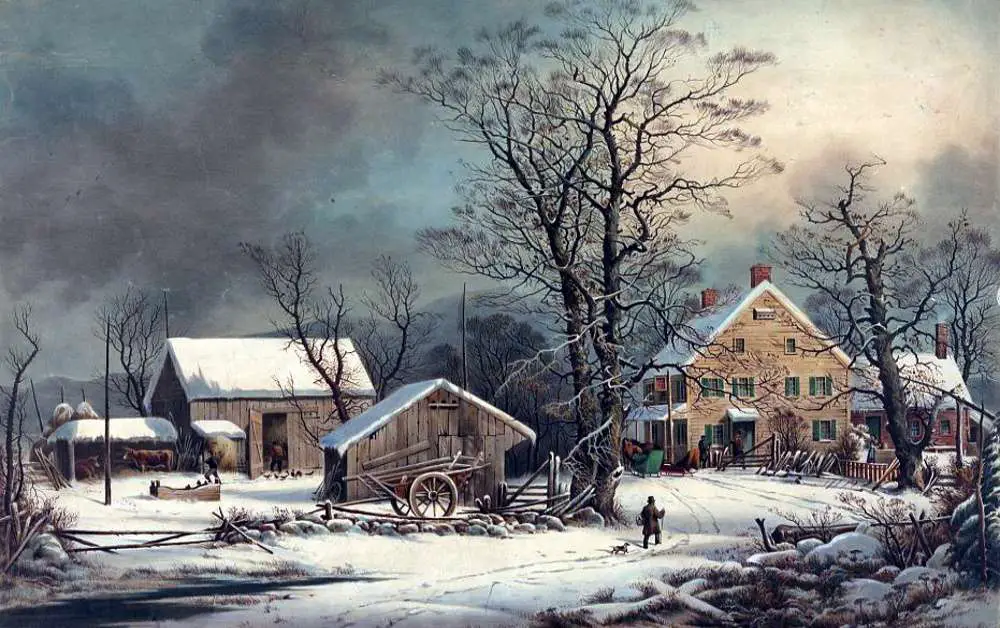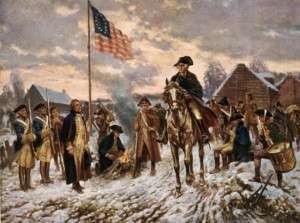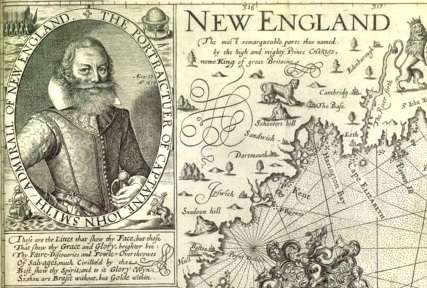The Little Ice Age changed New England history in ways that historians are only beginning to understand.
Though scientists don’t agree on what caused the Little Ice Age, most agree the climate cooled from the 15th century to the middle of the 19th century, with the greatest intensity between 1550 and 1700. Some scientists peg the coldest period even more narrowly, between 1645 and 1715. During that period the average winter temperatures in North America fell two degrees Celsius.
The NASA Earth Observatory blames diminished solar activity for the Little Ice Age, though scientists offer competing theories.
Historians, on the other hand, agree that the Little Ice Age altered the course of history. It froze rivers and canals in Northern Europe, wiped out cereal production in Iceland and caused famine in France, Norway and Sweden. Colder winters meant denser wood, which contributed to the superior tone of the Stradivarius violin.
Little Ice Age
 The Little Ice Age brought cool summers and bitterly cold winters to New England. During the Great Snow of 1717, for example, a series of snowstorms buried houses and got search parties lost looking for them.
The Little Ice Age brought cool summers and bitterly cold winters to New England. During the Great Snow of 1717, for example, a series of snowstorms buried houses and got search parties lost looking for them.
The Cold Friday of 1810 also belonged to the Little Ice Age. People died in their homes when the temperature suddenly plummeted more than 60 degrees in less than a day. Years later, Henry David Thoreau’s mother remembered how dishes froze as fast as they were washed – right next to the fire.
The Little Ice Age had a huge impact on the development of New England. Here are six ways it made history:
Little Ice Age Causes Mutiny
During the Little Ice Age, George Washington and his army suffered through the cold at Valley Forge during the winter of 1777-78. But contemporary observers actually called that winter “unusually mild.”
Washington and his troops suffered more in Morristown, N.J., during the Hard Winter of 1779-80. Violent snowstorms battered the Northeast, and both Boston and New York harbors froze over.
The weather made it impossible to bring supplies to the men, many of whom had no coats or shoes and didn’t eat for days at a time. The soldiers finally mutinied in early May, though an officer persuaded them to abandon their rebellion.
Colonization Delayed
Extremely harsh winters during the Little Ice Age destroyed the first colony in what is now Maine and delayed colonization in New England for a good 10 years.
A group of English investors called the Plymouth Company chartered the Popham Colony (also known as the Sagadahoc Colony) in coastal Maine. Two ships carrying 120 settlers set sail in May 1607 under the leadership of George Popham.
Popham’s death and the winter of 1607, described as “extreme unseasonable and frostie,” drove the colonists back to England. Sir Ferdinando Gorges, one of the investors, recalled in 1622, “all our former hopes were frozen to death.”
As a result, English interest in colonizing New England disappeared for a decade. Explorer John Smith expressed the view of New England as, “a cold, barren, mountainous, rocky desert.”
The Little Ice Age Drives Out the French
The French failed to colonize, too, on the island of St. Croix in the river that divides Canada from the United States. Seventy-nine men arrived in the summer of 1604 and thought they found a paradise, with warm weather, good soil and plenty of fish and game.
Then it began to snow on October 6, beginning a long and sharply cold winter. Thirty-five men died of a hideous, mysterious disease, probably scurvy. When spring finally arrived, they moved to what is now Annapolis, Nova Scotia.
Had the weather not been so severe, New England might be New France today.
Pequot War
No one had ever seen anything like the Great Colonial Hurricane of 1635. It blew down houses and forests and flattened “all the corn to the ground, which never rose more.”
An extremely harsh winter followed the hurricane, which caused the crops to fail. The English settlers coming to New England then competed intensely for corn.
In August of 1636, a group of colonists from Connecticut seized Indian corn. The Pequot counterattack escalated into the Pequot War, argues historian Geoffrey Parker in Global Crisis: War, Climate Change and Catastrophe in the Seventeenth Century.
King Philip’s War
Historians argue the Little Ice Age also created the conditions for King Philip’s War 40 years later. The cooler climate reduced crop yield, so the colonists demanded more and more land.
Metacomet, or King Philip, had to surrender some of his land in lieu of a fine levied by the Massachusetts General Court in 1671. Philip forged alliances with other tribes and built forts until he launched his attacks on English settlers in 1675.
Unfortunately for Metacomet, the unusually cold winter of 1675-76 caused many of his people to starve. It also led to one of the Indians’ worst defeats in the war. The swamps that usually protected a Narragansett fort froze during the winter. That allowed Benjamin Church and his men to massacre the inhabitants.
The colonists defeated the Indians. As many as a thousand Indians were sold into slavery, and 5,000 were killed in battle or died of sickness or starvation. Another 2,000 fled west or north. Plymouth Colony lost eight percent of its adult male population in the war, and per capita income among the colonists in New England didn’t recover for a century.
Encouraged Migration
In 1816, known as the Year Without a Summer, six inches of snow fell in June and every month of the year had a hard frost.
Temperatures dropped to as low as 40 degrees in July and August. People also called it ‘Eighteen Hundred and Froze to Death’ and the ‘Poverty Year.’
The cold, dry weather of 1816 created a craving for the warmer weather and fertile soils out west.
Hundreds and then thousands of New England families gave up their farms, packed their belongings into wagons and joined the throngs traipsing over rivers and mountains to Pennsylvania and the Ohio River Valley, which includes Ohio, West Virginia, Indiana, Illinois, and Kentucky.
Between 1810 and 1820, Maine lost as many as 15,000 people. Most left after the Year Without a Summer. Sixty Vermont towns lost population during that decade. The population of 60 more Vermont towns stayed the same while the U.S. population grew 32 percent.
Massachusetts gained only 50,000 people from 1810-20, while Ohio gained five times as many. The Massachusetts Legislature tried to hold on to its citizens by passing a homestead act that gave settlers 100 acres of land for $5.
This story about the Little Ice Age was updated in 2023.






9 comments
It also enabled the famous Thanksgiving Day poem (later song) titled A Boy’s Thanksgiving Day ( now known as Over the River and Through the Wood). Without the little ice age, young Lidia Maria would have needed another word to rhyme with “go”.
[…] The British army sought to finish off the Americans. British General William Howe was ensconced in Philadelphia while George Washington and his army retreated toward Valley Forge. […]
[…] mouth of the Kennebec River – began in the summer of 1607 and ended a year later in 1608. For one harsh winter a group of English settlers tried to stick it out at a small fortification they […]
The book 1491 suggests the deaths of so many First Nation people contributed to it. They always practiced controlled burning to prevent forest fires and to hunt. The lack of smoke dropped the temps.
Sounds like only yesterday.
1816 – the year without a summer – is primarily the result of the 1815 eruption of Mount Tambora https://en.m.wikipedia.org/wiki/1815_eruption_of_Mount_Tambora
[…] colony, which had been thriving for centuries, collapsed and was abandoned by around 1500 CE. Early European colonists in North America struggled to survive frequent winters of bitter cold and failed […]
[…] https://newenglandhistoricalsociety.com/six-ways-little-ice-age-made-history/. […]
[…] which had been thriving for centuries, collapsed and was abandoned by around 1500 CE. Early European colonists in North America struggled to survive frequent winters of bitter cold and failed […]
Comments are closed.